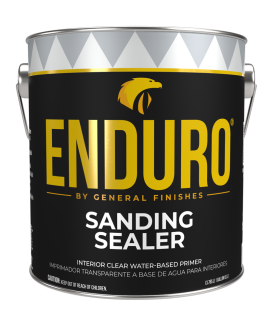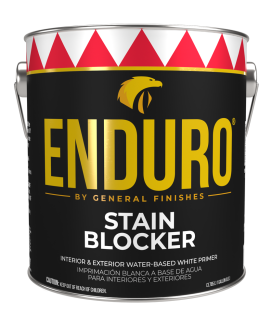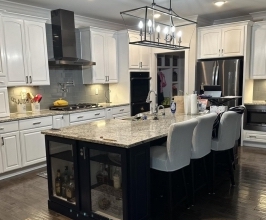This response is true of prepping and existing finish on furniture, but kitchen cabinets are more problematic because they are work areas where grease, steam, food splatters and oil from hands are common. Prep is basically degreasing and abrading the surface for better adhesion. Oil or substances on hands really show up on a failed re-finish around doorknobs and hands if the surface is not cleaned thoroughly.
Because of this, General Finishes believes there is no such thing as a "no prep" paint. We would be leading our customers down the path failure if we touted our products as such. Dirt, grime, oil from hands, wax, dusting sprays that contain silicone, oil soaps or wax prevent good adhesion causing the possibility of chipping, peeling and flaking - all signs of a failed finish. This is the number one reason we see for finish failure. The second is not allowing enough dry time.
The heart of the problem is that we often don't know what was used on the cabinets previously. If dusting sprays that contain silicone have previously been used, the risk of finish failure is high. There are no guarantees with silicone - it is almost impossible to remove. Here are our recommendations. It sounds like a lot of work because it is - charge more.
CLEANING AND PRIMING:
- Scrub with a degreasing detergent such as Spic and Span or Dawn soap first. Follow with a thorough rinse to remove all the soap.
WATCH this video about cleaning with Dawn detergent.
- Clean with a 50/50 mix of water and denatured alcohol. Let your piece dry thoroughly.
We prefer a 50/50 mix of denatured alcohol and water because it does not contain phosphates, is inexpensive, is readily available and does not require rinsing. You can use commercial furniture cleaners but check the label for phosphates - they will leave a residue behind that requires rinsing.
- Scuff sand with a 320 Grit Klingspor Ultra Flex Sanding PAD (or 400 grit sandpaper) and remove the dust. There are other sanding PADS out there - just make sure the grit is not too aggressive or you man sand down corners and edges down to bare wood.
- Put down a coat of General Finishes Sanding Sealer. GF Sanding Sealer can be used over cleaned and prepped existing finishes that will create a strong barrier with superior adhesion properties. The resin particle is larger so it builds fast, and finish sanding is a breeze.
(Note: We cannot comment on other sanding sealers because several on the market state dry times that are so short that our paint and stains would fail.)
- You can apply Gel Stain over the sanding sealer after 24 hours.
- You can apply paint or water based stain over the sanding sealer after 3 hours.
- You can apply a white primer over the sanding sealer if you want to color correct for a white paint.
OTHER CLEANING INFO:
- You can use vinegar, bleach or ammonia solutions, but our experience shows they are usually not aggressive enough for kitchen cabinets. We do not recommend using ammonia with water-based finishes as it can cause the finish to blush (turn white).
- Never use steel wool with water based products because the particles can become embedded and rust. Some alternatives are Klingspor Synthetic Wool and Merka Mirlon 1500 synthetic wool.
- Steel wool is still an acceptable option with oil-based finishes. GF recommends using oil-free 0000 wool from Liberon because it doesn't shred as easily as the hardware store brands.
- NEVER USE mineral spirits to prep clean before applying water-based finishes. You can correct this problem by cleaning again with a 50/50 mix of denatured alcohol and water. Let your project dry 24 hours before applying water-based products.
PROTECT YOURSELF
There are two ways to protect yourself:
- Use a contract and have customers sign off on a warranty. It is extremely exhausting and frightening to be faced with a customer angry over a failed finish. You cannot warrant a finish over unknown substances. Here is a suggestion for your contracts:
We cannot warrant finishes over an existing piece of furniture without knowing the history. If products containing silicone dusting powders, oil soaps or waxes have been previously used on the piece, they may contaminate a new finish and prevent adhesion. In these situations, it is best to strip and sand the entire piece. Occasionally, a previous wax finish or silicone may be impossible to remove.
______(Initials) I acknowledge that this piece has never been waxed/polished with a silicon-based dusting spray or cleaned with oil soaps.
______(Initials) I have no knowledge of waxes, silicone-based dusting sprays or oil soap products being used on my cabinets.
- Take the most used drawer or door in the kitchen and test your finish schedule first. And charge for it.

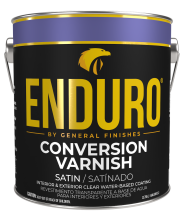 Enduro Water-Based Conversion Varnish
Enduro Water-Based Conversion Varnish
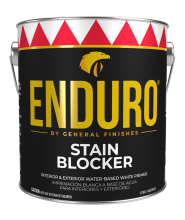 Enduro Water Based Stain Blocker Primer
Enduro Water Based Stain Blocker Primer
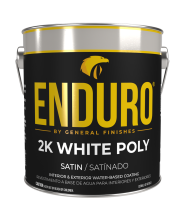 Enduro Water-Based Tintable 2K White Poly
Enduro Water-Based Tintable 2K White Poly
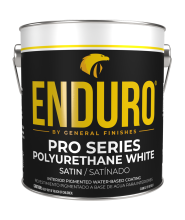 Enduro Water-Based Pro Series White Polyurethane
Enduro Water-Based Pro Series White Polyurethane
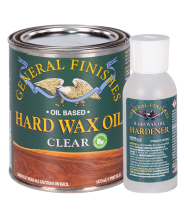 Hard Wax Oil & Hardener
Hard Wax Oil & Hardener
 Gel Stains
Gel Stains
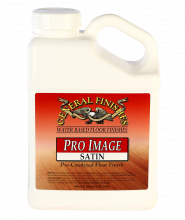 Pro Image Flooring Topcoat
Pro Image Flooring Topcoat
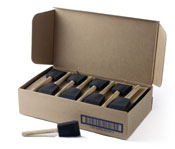 Jen Poly Brushes
Jen Poly Brushes
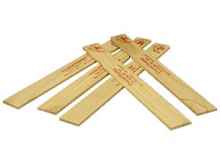 Stir Stix
Stir Stix
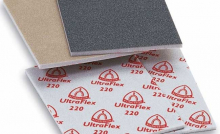 Ultraflex Softback Sanding Sponge
Ultraflex Softback Sanding Sponge
